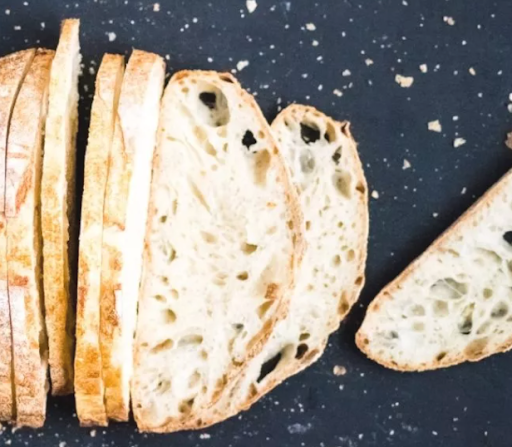Sourdough Bread: Out of a Rich History Comes a Rich Taste

Sourdough loaf (Arhoma)
Many of us think of sourdough bread only when it’s time to add it to the grocery list or when we pass by a bakery. Even fewer think of how it can be used as a dessert or a hearty side dish. Since we love everything about desserts, even the most obscure ones, we suggest you forget the industrial mass-produced loaves, because in today’s Dessert Talk blog, we’re going to tell you all about the rich, delicious artisanal bread and how it can help raise the level of your meals.
The origin of Sourdough Bread
First, when and where originated the first ever loaf of bread? It’s hard to imagine a world where people don’t even know what bread is, but that was the case until thousands of years ago. The oldest bread yet found was discovered in Switzerland and is believed to have been made in 3500 BC. The technique of leavening was discovered in Egypt, perhaps accidentally. It’s likely that one lucky person had left wheat porridge out for several days, then baked it, thus yielding the first bread.
Ancient Egyptians then began baking so much bread, to the extent that neighboring countries would refer to them as “bread eaters”. Many hieroglyphs depict production of bread and beer during this time period. By 2500 BC, the Ancient Greeks were already making eighty different types of bread! Being bread-enjoyers themselves, the Romans learned the art of making bread from the Greeks and then created a technique to knead large amounts of bread thanks to horse-driven mixers. Throughout ancient times and the middle ages, bread was often used as currency and a form of credit. Bakers were considered powerful credit brokers! Needless to say, they were full of dough (pun intended).
Small loaf of sourdough bread (Automne Boulangerie)
What is Sourdough made of?
Sourdough is a mixture of flour and water, left out to ferment. The wild yeast and good lactic acid bacteria integrate into a mixture, which helps the bread dough rise. As the name suggests, it generally has a slight sour taste, but it varies from one bread to the next. Sourdough has a long production time, which helps to generate its particular tanginess and deep aroma. Packed with organic acids, this bread has great keeping qualities, flavour and gas retaining properties.
Sourdough: Health Benefits
In terms of health benefits, this type of bread might surprise you. If you’re trying to eat less carbs but still love bread, then sourdough is the best pick for you. Because of its long fermentation process, most starch is broken down. Also, in a study comparing white, whole wheat, whole grain wheat barley, and white sourdough bread, the latest found to have the lowest post-meal blood sugar and insulin levels. Furthermore, the low glucose levels lasted beyond the next meal. It is also loaded with vitamins B1-B6, B12, folate, thiamin, niacin, riboflavin, vitamin E, selenium, iron, manganese, calcium, magnesium, phosphorus, zinc and potassium. Believe it or not, sourdough bread can also help in treating diabetes, as it contributes to lowering insulin response.
Coffee glazed sourdough donut (The Everyday Kitchen)
The sweet uses of sourdough
Thanks to its irresistible rich taste and tangy twist, there are endless baking possibilities. Many bakeries offer classic sourdough loaves filled with various fruits, such as raisins, cranberries, blueberries, and even dark chocolate. Not only that, but one can also use this type of dough to make any other kind of pastry. Thus you can find, for example, sourdough donuts, or panettones, and many more treats using this special type of dough. That’s what is beautiful about desserts: the myriad of options and opportunities are endless. Let your imagination run free, and don’t forget to check out for sourdough bread on Dessert Advisor.